Pyongyang’s 2025 Military Parade
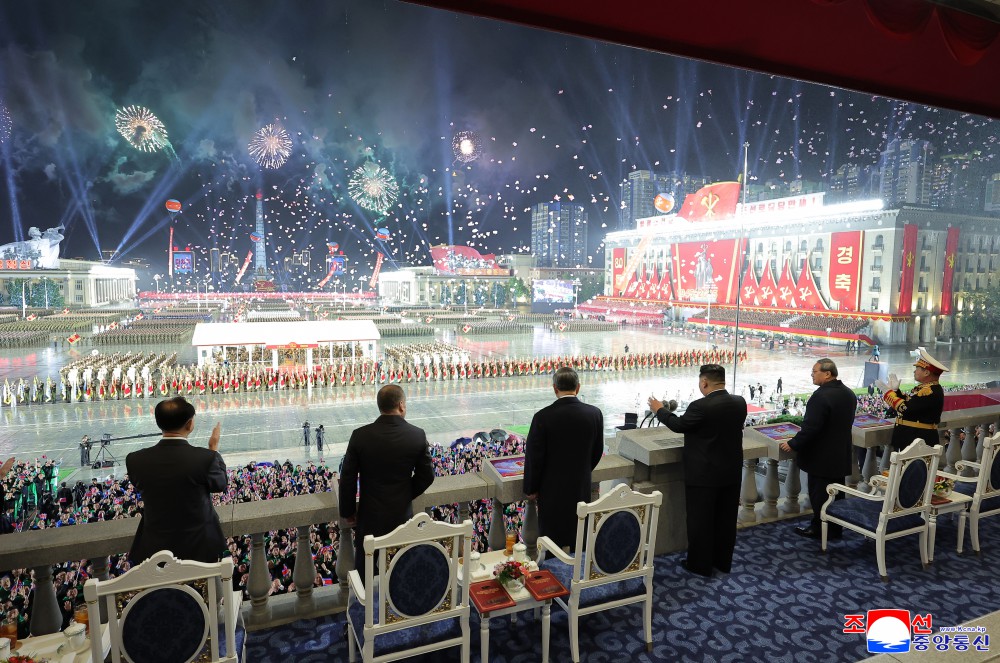
The Spectacle in Pyongyang: North Korea’s 2025 Military Parade
Last weekend, North Korea staged a grand military parade in Pyongyang to commemorate the 80th anniversary of the Workers’ Party of Korea (WPK). The event heavily orchestrated for maximum symbolic effect—served not only as a display of military hardware, but as a message to both domestic and foreign audiences about the regime’s ambitions and narratives.
What We Saw: New Weapons, Legacy Units, and Foreign Faces
1. The Hwasong-20 Debut
The parade’s headline was undeniably the unveiling of the Hwasong-20, which Pyongyang described as its “most powerful nuclear strategic weapon system.” It was mounted on 11-axle launchers, presented alongside other missile systems. Analysts emphasize that while the missile is new and ambitious, key technical uncertainties remain—especially regarding its guidance systems and whether its warheads could survive re-entry.
The Hwasong-20 is most likely powered by a solid-fuel rocket engine using advanced materials (e.g. carbon fiber), a design choice that enhances readiness and mobility. Some debate whether the shown missiles were fully functional prototypes or mock-ups.
2. Conventional and Supporting Forces
Beyond the spotlight on strategic missiles, the parade also included:
- Ballistic, cruise, and hypersonic missiles in smaller classes, reflecting efforts to diversify strike options.
- Tanks, artillery, drones, and other conventional platforms.
- Units linked to “overseas operations”, including troops that state media says fought in Russia’s Ukraine war.
- Historical and symbolic military formations (e.g. honor guards, militia or paramilitary units) that invoke lineage and regime legitimacy.
- It was noted by analysts that the parade had fewer weapons on display than in some previous years, perhaps as a signal of restraint or due to logistical constraints. Also, because of rainy weather, a planned flyover and drone show were reportedly canceled.
3. Political Theater: Foreign Guests & Speeches
High-profile guests attended, including:
- Chinese Premier Li Qiang
- Former Russian President Dmitry Medvedev, now in a senior role in Russia’s Security Council
- Vietnamese Communist Party leader To Lam
Kim Jong Un gave a speech praising North Korea’s military and casting it as an “invincible entity that destroys all threats.”He also lauded North Korean forces that purportedly fought in Ukraine, framing them as defenders of socialism on a global stage.
The presence of the foreign dignitaries underscores Pyongyang’s drive to break out of diplomatic isolation and project its relevance on the world stage. Russia and North Korea, for example, affirmed deeper cooperation in bilateral ties.
Hwasong-20
The Hwasong-20 was unveiled during a military parade in Pyongyang on October 10, 2025, marking the 80th anniversary of North Korea’s Workers’ Party. It is described by North Korean state media as their “most powerful nuclear strategic weapon system” It uses a solid-fuel rocket engine, the engine reportedly uses carbon-fiber composite materials, for weight reduction and strength improvement.
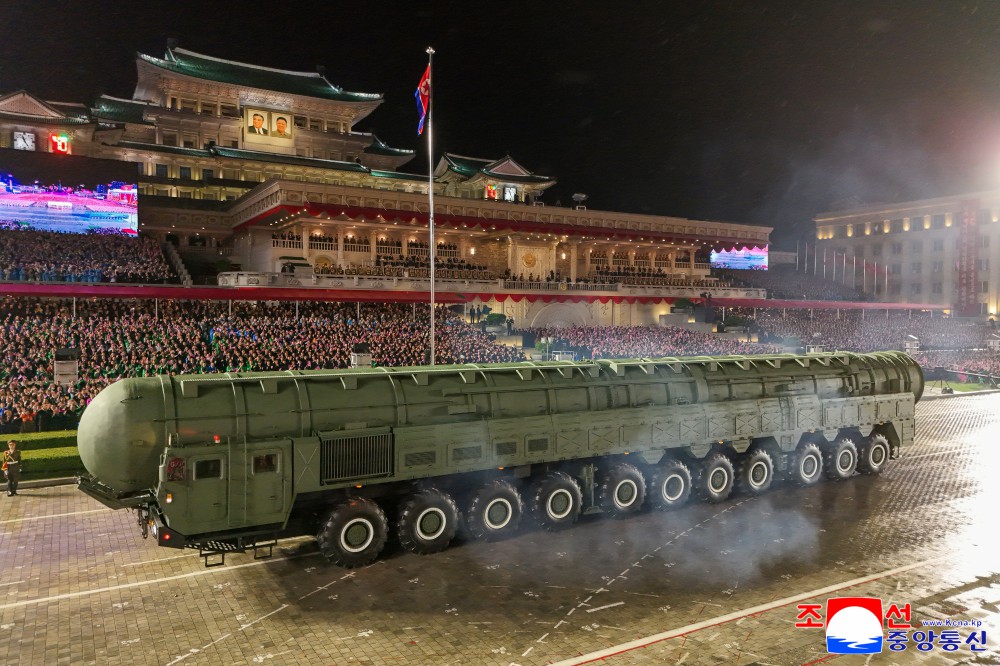

Key Events & Milestones for Hwasong-20
| Date | Event | Details / Observations |
|---|---|---|
| 2023-2025 (multiple dates) | Engine static testing | The solid-fuel rocket engine intended for Hwasong-20 underwent a series of static (ground) firing tests. Reports say there were eight such tests between 2023 and 2025. |
| 2 September 2025 | First public disclosure of Hwasong-20 engine program | North Korea revealed initial details about the engine under development, including that it was built using carbon fiber composite materials. |
| 8 September 2025 | “Final” engine ground test | The missile administration (or missile bureau) together with a chemical materials research institute carried out what North Korea called the ninth and final ground engine test for the Hwasong-20 engine. During this test, state media claimed a thrust output of approx 1,971 kN. Kim Jong Un oversaw the test. |
| 10 October 2025 | Public unveiling | The first public appearance of the Hwasong-20 ICBM system took place during the military parade in Pyongyang marking the 80th anniversary of the Workers’ Party of Korea. It was presented as “the most powerful nuclear strategic weapon system.” It was mounted on an 11-axle TEL (transporter-erector launcher). |
| Post-October 2025 (public commentary / projections) | Speculation about upcoming test launches | Analysts and foreign intelligence have suggested that, following the final ground test of the engine and public unveiling, a flight test of Hwasong-20 might happen “soon” (some sources suggest before end of 2025). But as of the latest reports, no such flight tests have been confirmed. |
Hwasong-11Ma

The Hwasong-11Ma made like the Hwasong-20 his debut during this parade, its the HGV variant of the Hwasong-11A (Iskander a lookalike) Its a solid fuel missile and transported on a five-axle TEL. There are no further specializations known. So its most likely still under development, and its not test launched yet. But Displaying the Hwasong-11Ma” hyper-sonic missile Shows North Korea’s advancement in missile technology beyond just range, toward more complex delivery systems.
Known Milestones for Hwasong-11Ma
| Date | Event / Announcement | Details |
|---|---|---|
| 5 October 2025 | Defense Development-2025 exhibition in Pyongyang | North Korea publicly unveiled the Hwasong-11Ma. It shows a variant of the Hwasong-11 SRBM family equipped with a maneuverable hypersonic glide vehicle (HGV) or glide‐body warhead. |
| 6 October 2025 | Media release of images & observations | Photos from KCNA and reports by outside analysts show the missile with a faceted / wedge-shaped nose (glide body), control surfaces, consistent with designs to permit lateral maneuvering at hypersonic speeds. |
| 10 October 2025 | Military parade in Pyongyang | Hwasong-11Ma was displayed publicly alongside new systems (e.g. Hwasong-20). This was the first parade display of the variant. |
Multiple MRLS systems
During the parade several MRLS systems where shown, one of the eye-catchers was a apparently new MRLS system. So far there is no designation given to it. But a number of analyst say it has some U.S. HIMARS resembles. Other system paraded where the: KN-25 (600mm), and a so far unknown MRLS system with over 20 unguided rockets.
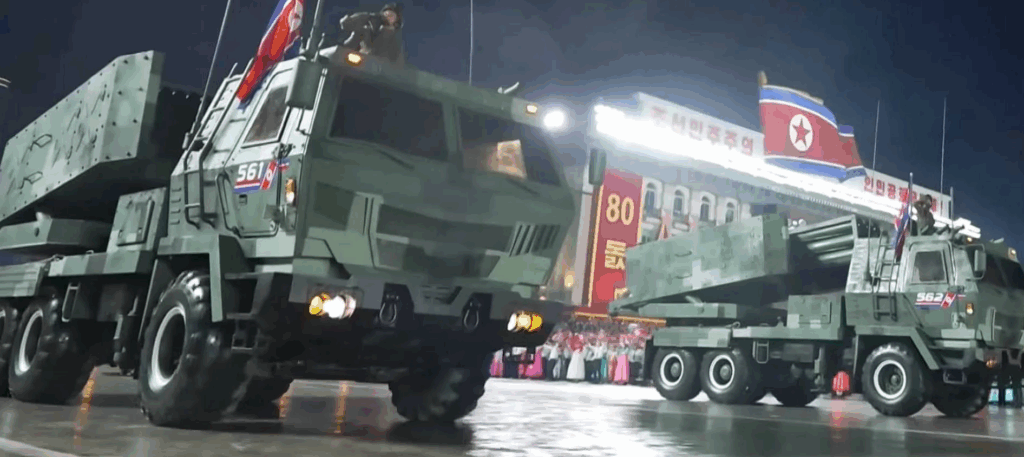
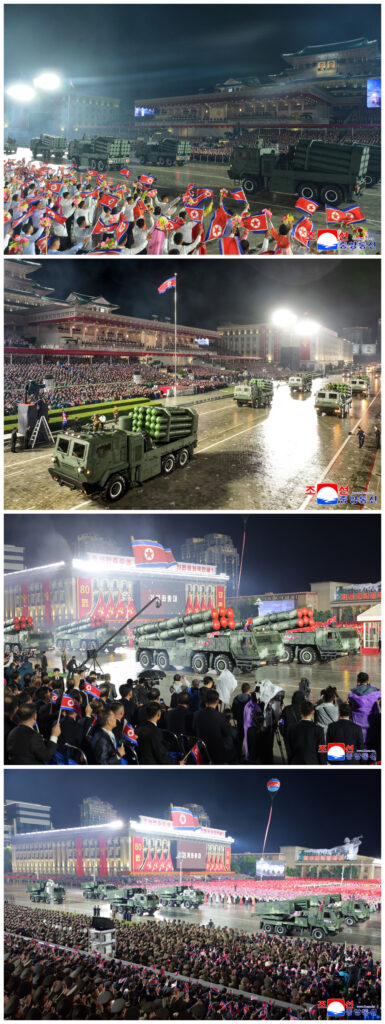
HWASONG-16b

Four TEL’s with they Hwasong-16B driving past Kim Jong Un. This two-stage IRBM-Hyper Glide Vehicle, had his first test launch on April 2024. North Korea claims that the missile traveled ~1,000 km and reached a peak altitude of ~101 and then executed a “pull-up” maneuver. South Korea argues the North Korean claim and said it crashed down after 600 km in the Sea of japan.
Timeline of Hwasong-16B Launches / Tests
| # | Date | Notes / Observations |
|---|---|---|
| 1 | 2 April 2024 | First test clearly identified as Hwasong-16B. It was described by North Korea as a successful test of a solid-fuel IRBM (intermediate-range ballistic missile) with a newly developed hypersonic glide warhead. The missile flew, reached a first peak altitude (~101.1 km), then a second peak (~72.3 km) during a “pull-up” maneuver, and reportedly flew about 1,000 km before landing in the East Sea. |
| 2 | 6 January 2025 | A subsequent test of Hwasong-16B. South Korea and Japan reported it flew approximately 1,500 km, reached multiple apexes (~99.8 km then ~42.5 km), and speed claims exceeded Mach 12. This test again involved a hypersonic glide vehicle (HGV) payload. |
Truck-based UAV / loitering drone launching system
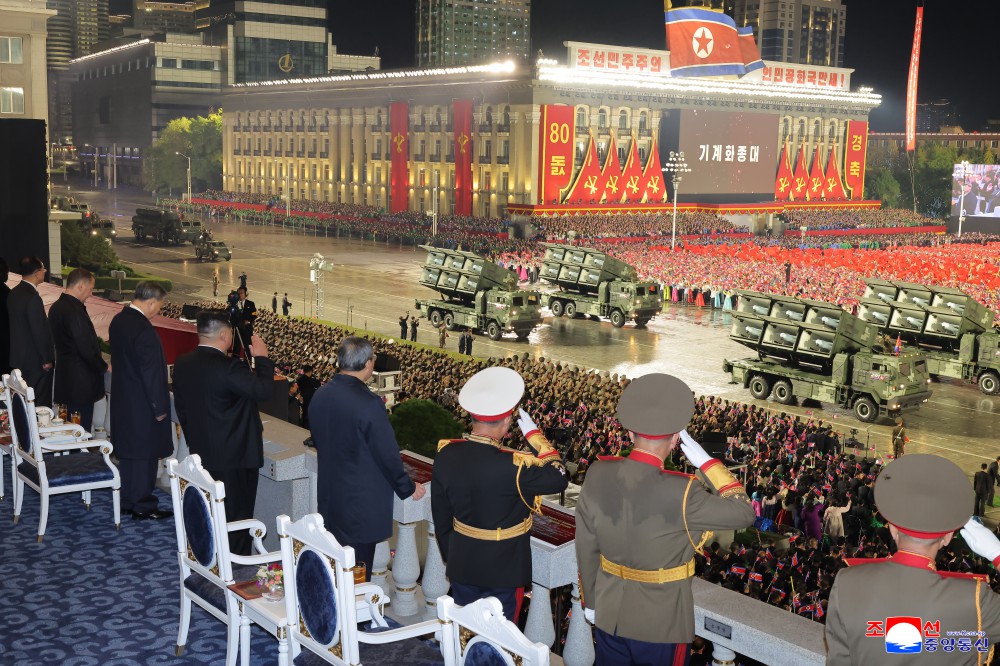
During the parade North Korea displayed a truck-based UAV / loitering drone launching system. The drones have a canard-design shape. North Korean media showed (blurred) images of the UAV test in August 2024.
KN-24
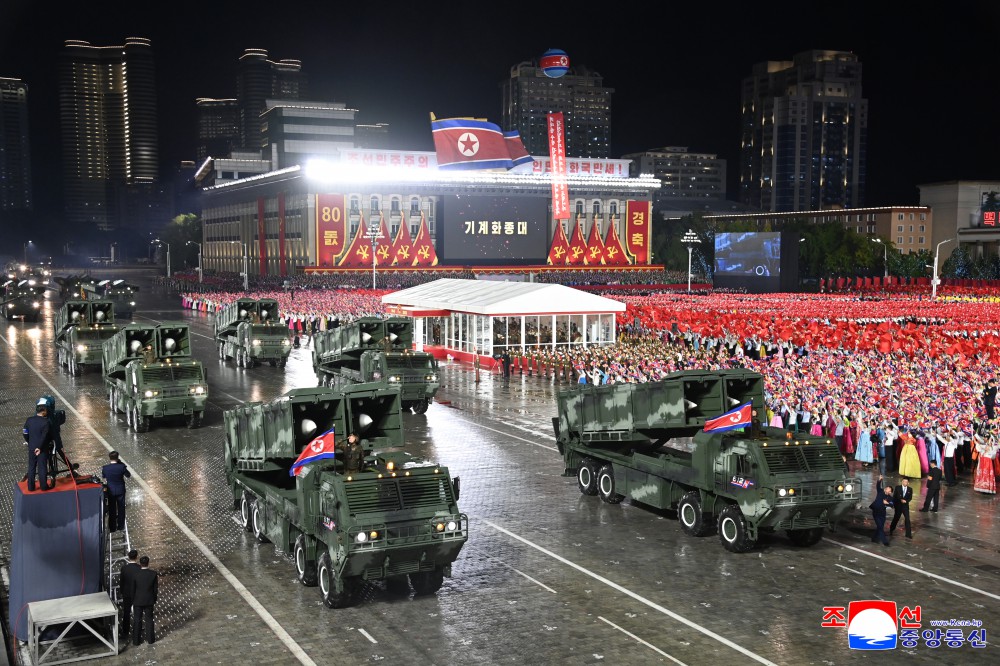
KN-24 is a solid-fuel single stage SRBM with a range of ~400 Km and a warhead between 400-500 Kg. Its the North Korean equivalent of MGM-140 ATACMS with they ATACMS having a bit shorter range.
Timeline of KN-24 / Hwasong-11B Tests & Milestones
| Date | Description / Notes | Details / Observations |
|---|---|---|
| 10 August 2019 | First known test | Two missiles launched ~15 minutes apart, depressed trajectory; reached ~48 km apogee and ~400 km range. |
| 16 August 2019 | Second test | Two missiles launched; reached ~30 km altitude and ~230 km range. |
| 21 March 2020 | Third known test | Two missiles launched from Sonchon, apogee ~50 km, range ~410 km; possibly using “pull-up” maneuvers. |
| 17 January 2022 | Reported test | Two KN-24 missiles launched from Sunan (Pyongyang); range ~380 km, apogee ~42 km |
Parade of North Korean troops who joint the Russian fight in the Ukraine
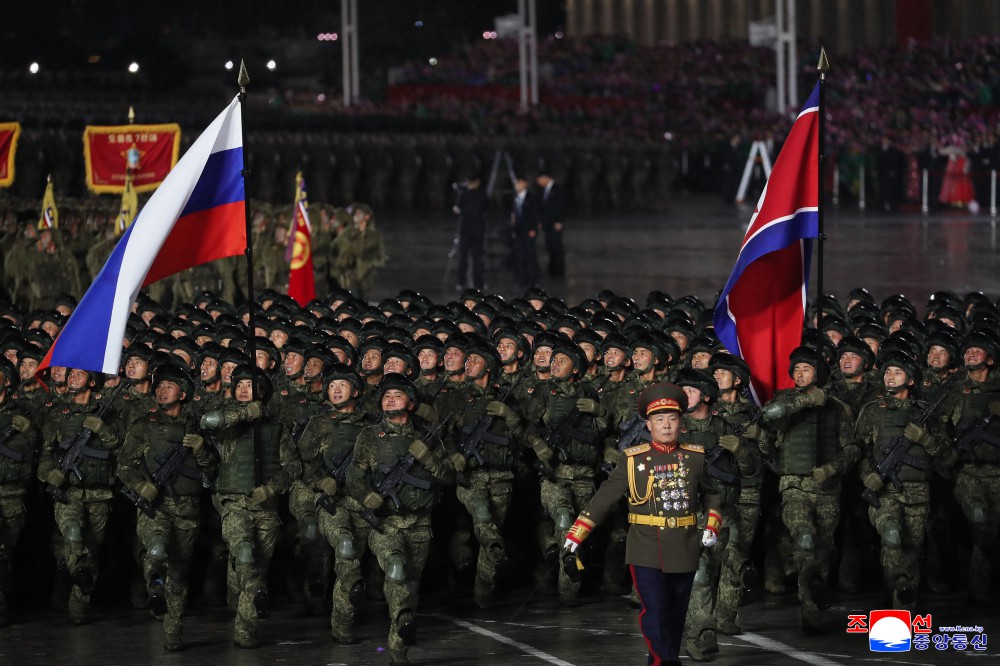
A special and Prominent place the parade was there for the North Korean troops who fought alongside the Russians in the Ukraine. These troops and the presence of Dmitry Medvedev symbolize the strong (military) alliance between Russia and North Korea. Russia’s presence and thanks for North Korea’s support in Ukraine are meant to display solidarity. By inviting and hosting foreign leaders amid such displays, Kim signals he is not operating in isolation.
Looking Ahead: What to Watch
- Missile tests — Will the Hwasong-20 or associated systems be flight-tested soon to validate performance?
- Technical disclosures — Any leaks or open-source analyses revealing internal specs (e.g. warhead design, propulsion) will be significant.
- Internal messaging — How North Korea propagandizes the event domestically (education, media, elite messaging).
- Follow-up displays — Will future parades show more advanced systems or upgrades, or will the regime consolidate what was shown?
Conclusion
The 2025 military parade in Pyongyang was more than pomp and ceremony. It was a calibrated act of signaling — a mix of bravado, deterrence, and diplomatic theater. While the Hwasong-20 dominated attention, the broader narrative was about regime resilience, evolving alliances, and North Korea’s insistence that it be treated as a serious strategic actor.
But beneath the spectacle lies a more cautious truth: many of the showcased capabilities remain unverified. The challenge for analysts and policy makers is to discern what is real, what is aspirational, and how best to respond.